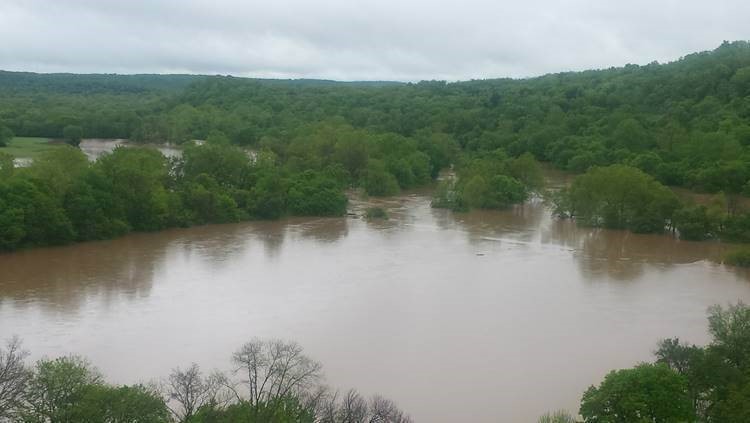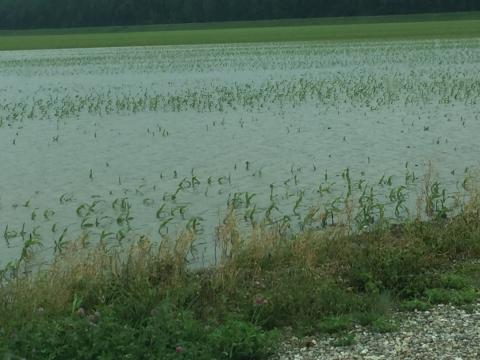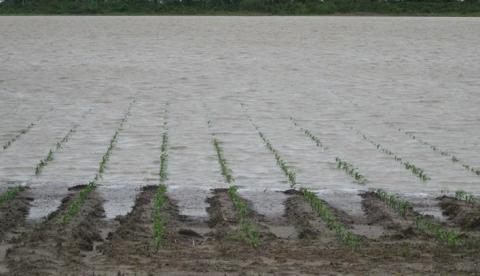April showers bring May flowers. That is what many would like to have seen Mother Nature deliver this spring. Instead, late April brought an onslaught of unusual weather across the country.
Excessive rainfall caused record-breaking floods in the central U.S., a blizzard pelted the High Plains, devastating tornadoes tore through Texas and wildfires continued to blaze in the southeast.
Multiple fatalities were reported as a result of the floods in Missouri, Arkansas, Texas and Oklahoma. In Missouri there was massive destruction to infrastructure, including roads and bridges that were demolished. At one point, Missouri had over 300 roads closed across the state, including two major Interstates.
In a news release earlier today, Agriculture Secretary Perdue reminded farmers, families and small businesses that USDA is here to help. Amidst the destruction, USDA Farm Service Agency employees have been working diligently to assess damage and aid with disaster assistance to America’s farmers and ranchers.
Now that the Missouri waters are receding, FSA staff are evaluating the impact on agriculture in these flood impacted areas. Sheria Yancey, county executive director for Franklin and Jefferson Counties in Missouri, estimated 70 percent of the corn crop in Franklin County and 60 percent in Jefferson County was damaged or destroyed. In addition to the damage to row crops and hay pastures, Yancey said the floods have also impacted a local orchard, sod farmers and many fruits and vegetable producers in her county.
Yancey said farmers are working quickly to get their farms back in shape in hopes to still get a 2017 crop in.
“Thank goodness this didn’t happen in June or July because they can still get a crop planted,” Yancey said. “And we’ll do everything we can to try to make that happen too.”
Secretary Perdue visited the Arkansas state leadership and flood sites last week to assess the volume of damage. Becky Davis, FSA county executive director in Randolph County, Arkansas, estimates most of the corn planted in her county is a complete loss but feels some of the planted rice might survive. The current of the flood waters was so swift in some areas that it pulled the plants right out of the ground. Also, many producers have lost their first cutting of their hay crop due to the grass being matted down and debris in the fields.
“Our producers are already financially stressed and were already wondering if they were going to farm again,” she explained. “It’s really going to put a strain on them.”
Davis said because of the swift currents, a lot of the farm ground in her county will be severely damaged and that she, like other states, will see a lot of activity with the Emergency Conservation Program (ECP) to help repair the impacted farmland.
Rick Graden, acting FSA state executive director and executive officer in Illinois, said conservation structures, such as terraces, will need to be rebuilt in areas affected by the floods in southern Illinois.
“In the end, we’ll have need for ECP funding to rebuild conservation practices that couldn’t withstand the deluge of Mother Nature,” Graden said.
Winter Storm Ursa struck parts of Colorado, Kansas, Oklahoma and Texas the same weekend as the central U.S. flooding. The Oklahoma panhandle was one area hit hard by the blizzard where some areas reported up to 18 inches of snow.
Mike Griffin, FSA county executive director for Texas County, Oklahoma, said it was whiteout conditions, with the heavy, wet snow blowing sideways. Cattle piled up in fence corners, or in low-lying areas, to get out of the wintery conditions.
Some cattle walked right through fences and herds have become comingled. Early estimates show nearly 4,000 head of livestock throughout the Oklahoma panhandle and southwestern Kansas have died in this weather event.
Mother Nature didn’t hold back as eight tornadoes touched down in Henderson and Van Zandt counties in Texas. The County Emergency Board for Henderson and Van Zandt Counties estimate the tornadoes impacted 1,500 farms with damage including: broken pond dams, destruction to livestock fences, damage to machinery, equipment and barns, as well as damage to county roads and bridges. It is estimated that at least 900 head of cattle were killed or are missing as a result of these tornadoes. More than 5,000 homes were damaged or destroyed.
Parts of Florida and Georgia continue to battle a wildfire that began in early April with a lightning strike. According to the Georgia Fish and Wildlife Service, the fire has spread over 148,000 acres. Florida FSA reports there has been some damage to some nonindustrial private forest (NIPF) where FSA’s Emergency Forest Restoration Program (EFRP) may provide assistance.
As the flood waters clear and the cleanup continues, FSA employees will be working alongside the farmers and ranchers to ensure they get the assistance they need to recover from these devastating events.
For information on how USDA can provide disaster assistance, visit the Farm Service Agency disaster assistance webpage.




